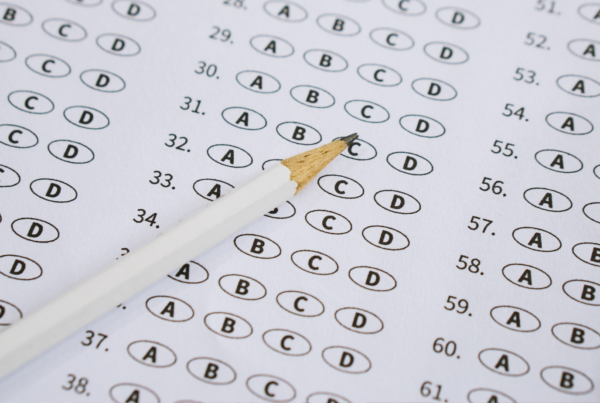 By Dan Marlin
By Dan Marlin
Yesterday, the SAT announced that it will be going fully digital starting in the spring of 2024. The ACT and SAT have made overtures to computer-based testing in the past, though the pandemic scuttled some of the ACT’s plans to that effect. However, this move seems more serious and detailed. Here’s what we know so far.
The format will be different
Gone is the no-calculator math section; students will be permitted to use calculators on every math problem. Gone too are long reading passages with 10-11 problems apiece – they will be replaced by short passages that each include one problem. And word problems on the math section will be shorter. Each student will get a different test, which will be adaptive, providing students with questions that get easier or harder depending on their performance as they go along. (This should be familiar to you if you’ve ever taken the GRE, for example.)
The new format should be more student-friendly
According to the SAT, due to these format changes, the exam will only take approximately two hours instead of three, and students will get more time to answer each question. All of the registration will also happen in advance, further cutting down the amount of time required of students on test day. Students with accommodations should benefit, too, in terms of managing extended time, being able to zoom in and highlight text, and even having the opportunity to have text read to them electronically.
Scoring will be the same but faster
The scoring will remain the same: Reading/Writing out of 800, and Math out of 800, for a maximum composite score of 1600. The computerized nature of the test also allows for faster score reporting – students will be able to get their scores in as quickly as a few days, rather than having to wait for weeks.
The domestic roll-out of the digital SAT won’t happen until Spring 2024
The SAT will start its digital testing internationally in 2023, with US students beginning to test in 2024, so this change will affect students currently in 9th grade and younger. Juniors in the Class of 2025 might have two different test-taking experiences, if they take the paper test in the fall and the computer-based test in the spring. (The SAT will not offer paper-and-pencil at all once it makes the transition.) But students will still get some experience with the digital test ahead of time, because…
The PSAT will go virtual starting in Fall 2023
College Board is billing this change as a way to allow students to “practice” for the SAT by taking a virtual PSAT in the fall.
Students can use their own devices
The SAT will now be on an app that students can download onto their own device or one provided by their school. It will save their progress if they get disconnected from the internet and prevent them from opening web browsers to search for the correct answer. It will also include a graphing calculator, though students can use their own if they so choose. It will allow students to mark answers they want to go back to and will include a timing clock, as well. But it will still be offered only at schools and test centers – students can’t take it at home.
Why is the SAT doing this, and why now?
The College Board and ACT can both be inscrutable when it comes to changes in their testing, but this seems to be a reaction to a couple of things. First, the pandemic accelerated the trend of colleges “going test-optional,” so it’s incumbent on the SAT and ACT to incentivize students to take their tests (and, perhaps more importantly, for states to buy them to use as statewide assessments). Also, the tests have come under fire for bias toward certain subgroups, as well as for the pressure they put on students. Therefore, it appears the SAT felt that shortening the test and tweaking its format helps it become more accessible while remaining as relevant as possible. In addition, the adaptive, digital nature of the test should be more secure and less prone to cheating than would a paper-and-pencil test that can be scanned and shared.
What does this mean for my child and for Galin’s test prep?
If your child is in 10th grade or above and interested in the SAT, they will still take the paper-and-pencil version. For now, students in 9th grade or below just need to be aware of the change. The SAT plans to have practice problems and passages available starting this coming fall, so we’ll be able to see what they look like at that point. The good news is that many of our strategies are applicable across tests and formats. And if your child really wants to stick with paper-and-pencil, well, there’s always the ACT. At least for now.





